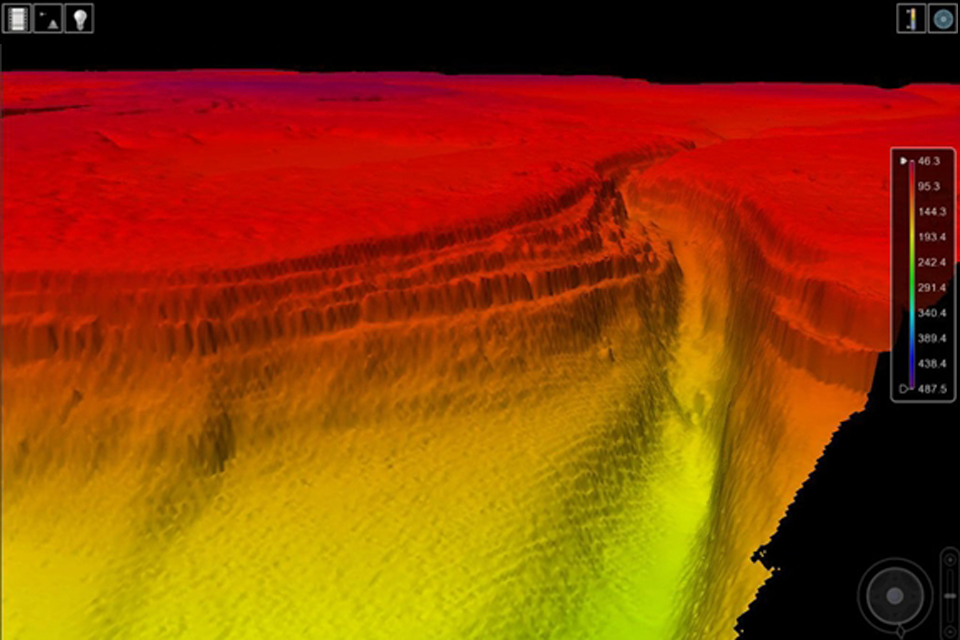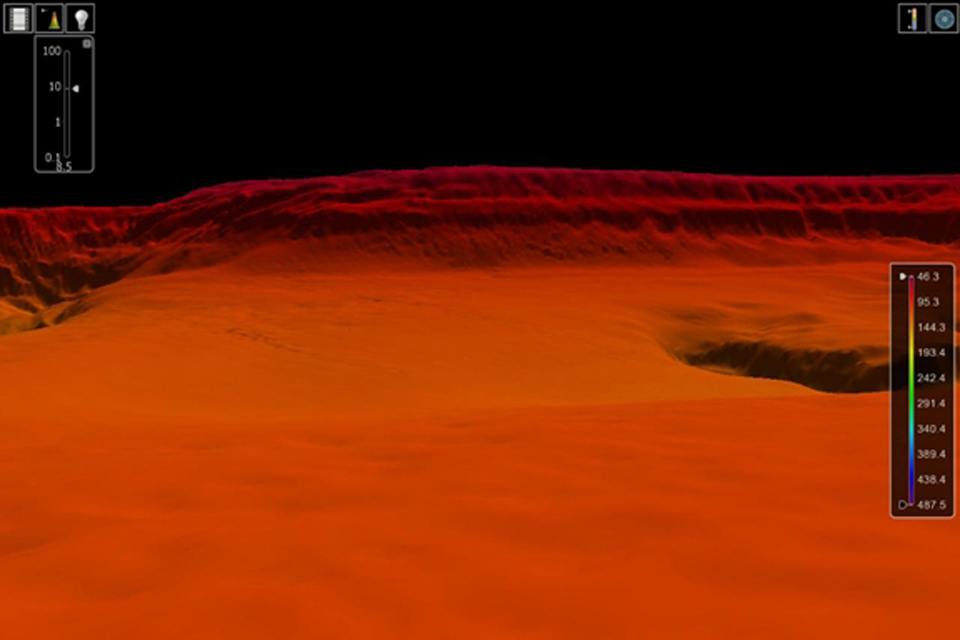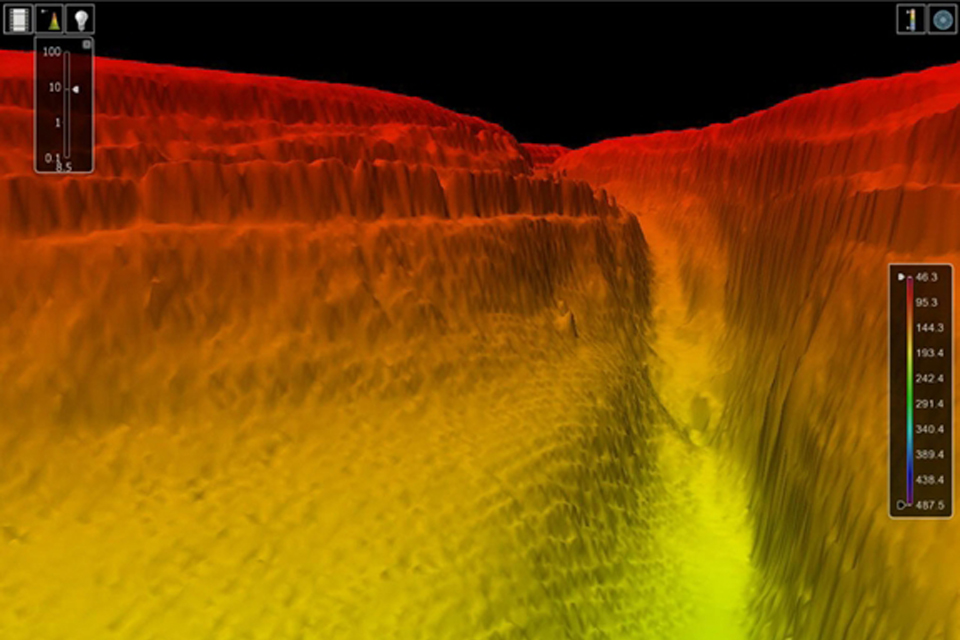A cluster of South Pacific reefs that is either dangerous or non-existent still stays on nautical maps
From Wikipedia material
Last month, marine biologists discovered that
Sandy Island, an island presumed to lie off the eastern coast of Australia in the Coral Sea, doesn't exist and never has, despite appearing on Google Map.
In such a tricky environment, it’s understandable that the precautionary principle is maximally applied.
Thus there would be implicit support for any assertion that islands do come rise up suddenly out of the sea, there is also good support that islands in some parts of the world can disappear in a volcanic explosion or even seismic happenings.
 A cluster of reefs on the Admiralty 4001 planning chart
A cluster of reefs on the Admiralty 4001 planning chart
Until an obstacle’s existence is positively disproved, this explains why a cluster of potential dangers to shipping to the east of New Zealand, remains on the official map.
Phantom islands
are usually considered something of the past, but even today it is now generally accepted that these islands do
not actually exist.
In November 1875,
Sir Frederick Evans, newly appointed hydrographer of the British Navy, ordered 123 doubtful islands banished from Admiralty Charts : the corrected chart was designated 2683 for the Pacific Ocean (1:21,830,000).
Other nearby historically reported reefs which may not exist are:
Jupiter Reef,
Wachusett Reef, and
Ernest Legouve Reef and Sophie Christenson shoal.
The historical sightings of these reefs
were probably inspired by the supposed existence of Maria Theresa Reef, first
reported in 1843.
David Rumsey collection
The Maria-Theresa Reef is a supposed
reef in the
South Pacific (south of French
Tuamotu islands and east of
New Zealand).
It is also known as Tabor Island or Tabor Reef on French maps.
extract from Ocenanie, Charles Lacoste & J. Migeon, 1895
Its position was indicated 16 of November initially of 1843 by naval captain American Asaph P. Taber (nicknamed “Tabor”) that directed to the
whaler Maria-Theresa that had weighed anchor of the port of
New Bedford in
Massachusetts.The coordinates to be situated at
37°00′S / 151°00′W, later adjusted to
37°00′S / 151°13′W that Taber gave were, the news of the possible discovery appeared in the newspaper Sidney Morning Herald for the first time of October of 1853, nevertheless if is observed Binnacle of Taber note that alternates the words to breacker (rompiente coast) and to breacher ("surtidor" of a whale) which makes doubt the initial news of the discovery still more.
In 1957 this island was looked for without success in those places.
New Zealand's
HMNZS Tui made an extensive search of the area in the 1970s and found no shallows or islands.
In 1983 the coordinates were recalculated at
36°50′S / 136°39′W, considering itself like correct, this is: to the south of Tubuai and to more than 1,000 km to the east of the first geolocalization, nevertheless the search in that point also has been unfruitful in spite of the use of satellite photography of hi-res reason why at the moment – although still appears in cartographies – its existence is considered like doubtful, reason why usually is considered in the category of ghost islands.
extract from Pacific ocean, Richard Andree (1895)
other map Pacific Ocean, Edward Weller 1898 (National Library of Australia)
An amateur's radio journal "
CQ" in 1966 published a photo and description
of Don Miller (famous DXer, callsign W9WNV now AE6IY) broadcasting from what he claimed was Maria Teresa Reef.
This has been since proven to be a hoax. (document)
extract from Pacific Island (Edward Standford) 1901
The depths in the region were shown to be 2,734
fathoms (5,000 m).
In popular culture, the island appears in
Jules Verne's novels
In Search of the Castaways and
The Mysterious Island.
In In Search of the Castaways (The Children of Captain Grant), the island shelters Captain Grant and two of his crew.
Its
coordinates being half-erased in the help message found by the children, it takes them months to find the castaways.
At the end of the book,
Ayrton, the renegade, is left in Grant's place to live among the beasts and regain his humanity.
In The Mysterious Island, after they have settled on
Lincoln Island, the heroes also find a message in a bottle, but the coordinates and name of the island appear clearly.
They
use a small ship to rescue Ayrton, and bring him back to civilisation
and rehabilitation. Eventually, the bottle turns out to have been
specifically sent to the heroes by the benevolent
Captain Nemo.
Other nearby historically
reported reefs which also may not exist are Jupiter Reef, Wachusett
Reef, and Ernest Legouve Reef.
Even in the 21st Century, some map and atlas publishers still show this
fictitious group of reefs in the South Pacific.
Portion of map "Sovereignty and Mandate Boundary Lines in 1921 of the Islands of the Pacific"
, Bumstead, Albert H. and James M. Darley (source)
Captain Lambert of the ship Wachusett reported that on June 4, 1899 he passed over a
reef which appeared to be of
coral formation in approximately latitude
32°18′S / 151°08′W.
The reef appeared to be about 500 feet wide.
The bottom showed of a dark gray color with deep blue on both sides of the reef.
The depth was estimated at from 5 to 6 fathoms; unfortunately no soundings were taken.
The 2005 edition of the National Geographic Atlas of the World still shows Wachusett Reef, with a depth of 9 meters. (source from
Pacific Islands Pilot, v. 2)
Nevertheless, its existence is doubtful
.
Wachusett Bank and Maria Theresa Reef on the German map of Antarctica 1904
extract from Commercial Atlas for America (Rank MacNally), 1924
(David Rumsey collection)
extract from Oceania Politica (Touring Club intaliano), 1924
(David Rumsey collection)
The reef was about 100 metres long and another reef was sighted near it.
Mr. Kinge, commanding the German barque Jupiter on a voyage between
Newcastle, New South Wales and
Tahiti, reported having passed breakers during the night of December 3rd, 1878, in
36°37′S / 150°15′W.
The breakers were observed in two places, each of which had a diameter of about 30 yards, and appeared to be a quarter of a mile apart.
No further intelligence has been obtained regarding this shoal.
- Sophie Christenson shoal :
Soviet Union atlas map (1967)
Discovered by 'Sophie Christenson' schooner in 1913.
'Sophie Christenson', an American four-masted schooner built in Port Blakely in 1901.
She was built for the lumber trade and for hauling general cargo.
She was 180.6-feet long with a 38.9-foot beam and a 13.4-foot depth of hold.
She first came to Poulsbo with Captain John Grottle,
and last in 1941 with Captain J.E. Shields, her famous skipper.
Captain J. E. Shields aboard Sophie Christenson





















